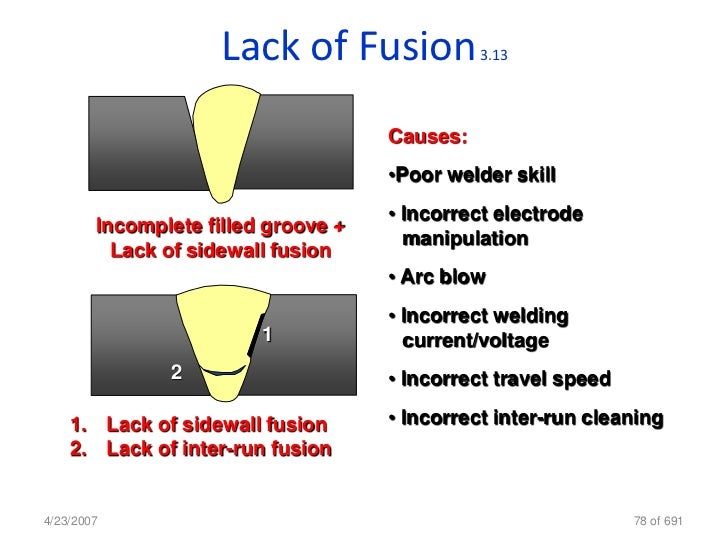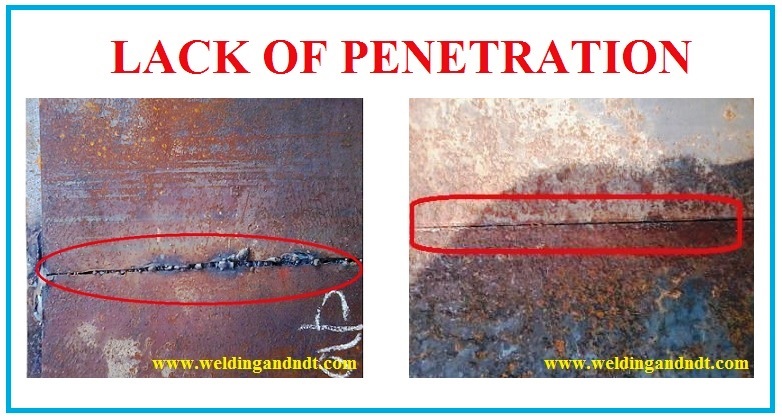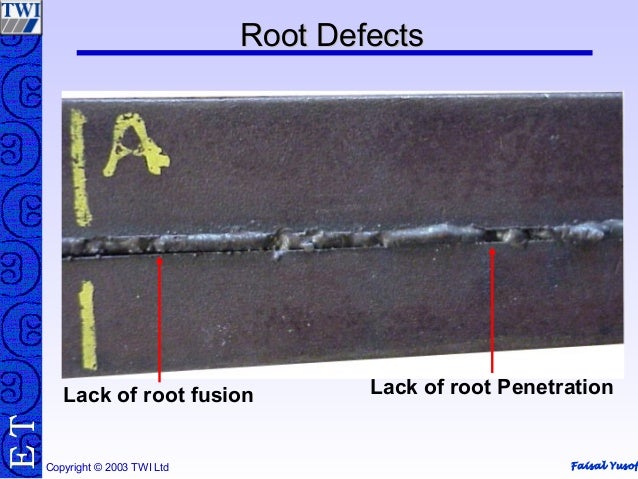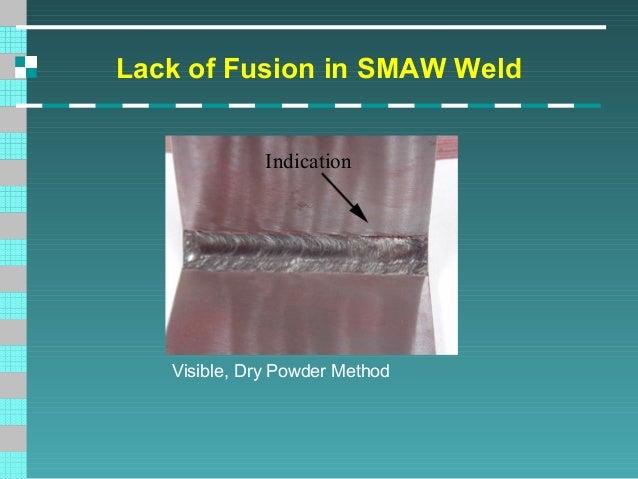

 Weld defects/imperfections in welds - lack of sidewall and inter-run fusion
Weld defects/imperfections in welds - lack of sidewall and inter-run fusion
May 21, 2014 Weld Imperfection - Lack of Fusion and Penetration Lack of union between the weld metal and the parent metal or between the successive layers of weld metal LACK OF SIDEWALL FUSION Lack of union between the weld and parent metal at one or both sides of the weld. In welds both the lack of fusion which is a structural defect and the lack of fusion in which the metal joint is interrupted by voids and non-metallic inclusions may be found. The pure lack of fusion can be detected only by the visual inspection during welding. The other types of lack of fusion may be detected by ultrasonic testing methods.
| Demagnetising a pipe |
 This article describes the characteristic features and principal causes of lack of sidewall and inter-run fusion. General guidelines on best practice are given so that welders can minimise the risk of imperfections during fabrication.
This article describes the characteristic features and principal causes of lack of sidewall and inter-run fusion. General guidelines on best practice are given so that welders can minimise the risk of imperfections during fabrication.Identification
Lack of fusion imperfections can occur when the weld metal fails
- to fuse completely with the sidewall of the joint (Fig. 1)
- to penetrate adequately the previous weld bead (Fig. 2).
| Fig. 1. Lack of side wall fusion |
| Fig. 2. Lack of inter-run fusion |
Causes
The principal causes are too narrow a joint preparation, incorrect welding parameter settings, poor welder technique and magnetic arc blow. Insufficient cleaning of oily or scaled surfaces can also contribute to lack of fusion. These types of imperfection are more likely to happen when welding in the vertical position.
Joint preparation
Too narrow a joint preparation often causes the arc to be attracted to one of the side walls causing lack of side wall fusion on the other side of the joint or inadequate penetration into the previously deposited weld bead. Too great an arc length may also increase the risk of preferential melting along one side of the joint and cause shallow penetration. In addition, a narrow joint preparation may prevent adequate access into the joint. For example, this happens in MMA welding when using a large diameter electrode, or in MIG welding where an allowance should be made for the size of the nozzle.
Welding parameters
It is important to use a sufficiently high current for the arc to penetrate into the joint sidewall. Consequently, too high a welding speed for the welding current will increase the risk of these imperfections. However, too high a current or too low a welding speed will cause weld pool flooding ahead of the arc resulting in poor or non-uniform penetration.
Welder technique
Poor welder technique such as incorrect angle or manipulation of the electrode/welding gun, will prevent adequate fusion of the joint sidewall. Weaving, especially dwelling at the joint sidewall, will enable the weld pool to wash into the parent metal, greatly improving sidewall fusion. It should be noted that the amount of weaving may be restricted by the welding procedure specification limiting the arc energy input, particularly when welding alloy or high notch toughness steels.
Magnetic arc blow
When welding ferromagnetic steels lack of fusion imperfections can be caused through uncontrolled deflection of the arc, usually termed arc blow. Arc deflection can be caused by distortion of the magnetic field produced by the arc current (Fig. 3), through:
- residual magnetism in the material through using magnets for handling
- earth's magnetic field, for example in pipeline welding
 The effect of welding past the current return cable which is bolted to the centre of the place is shown in Fig. 4. The interaction of the magnetic field surrounding the arc and that generated by the current flow in the plate to the current return cable is sufficient to deflect the weld bead. Distortion of the arc current magnetic field can be minimised by positioning the current return so that welding is always towards or away from the clamp and, in MMA welding, by using AC instead of DC. Often the only effective means is to demagnetise the steel before welding.
The effect of welding past the current return cable which is bolted to the centre of the place is shown in Fig. 4. The interaction of the magnetic field surrounding the arc and that generated by the current flow in the plate to the current return cable is sufficient to deflect the weld bead. Distortion of the arc current magnetic field can be minimised by positioning the current return so that welding is always towards or away from the clamp and, in MMA welding, by using AC instead of DC. Often the only effective means is to demagnetise the steel before welding.| Fig. 3. Interaction of magnetic forces causing arc deflection |
| Fig. 4. Weld bead deflection in DC MMA welding caused by welding past the current return connection |
Lack Of Sidewall Fusion
Best practice in preventionThe following fabrication techniques can be used to prevent formation of lack of sidewall fusion imperfections:
See Full List On Marinewiki.org
- select welding parameters (high current level, short arc length, not too high a welding speed) to promote penetration into the joint side wall without causing flooding
- ensure the electrode/gun angle and manipulation technique will give adequate side wall fusion
- use weaving and dwell to improve side wall fusion providing there are no heat input restrictions
- if arc blow occurs, reposition the current return, use AC (in MMA welding) or demagnetise the steel
Cached
Acceptance standards
The limits for incomplete fusion imperfections in arc welded joints in steel are specified in BS EN ISO 5817 for the three quality levels (see Table). These types of imperfection are not permitted for Quality Level B (stringent) and C (intermediate). For Quality level D (moderate) they are only permitted providing they are intermittent and not surface breaking.
For arc welded joints in aluminium, long imperfections are not permitted for all three quality levels. However, for quality levels C and D, short imperfections are permitted but the total length of the imperfections is limited depending on the butt weld or the fillet weld throat thickness.

Comments are closed.